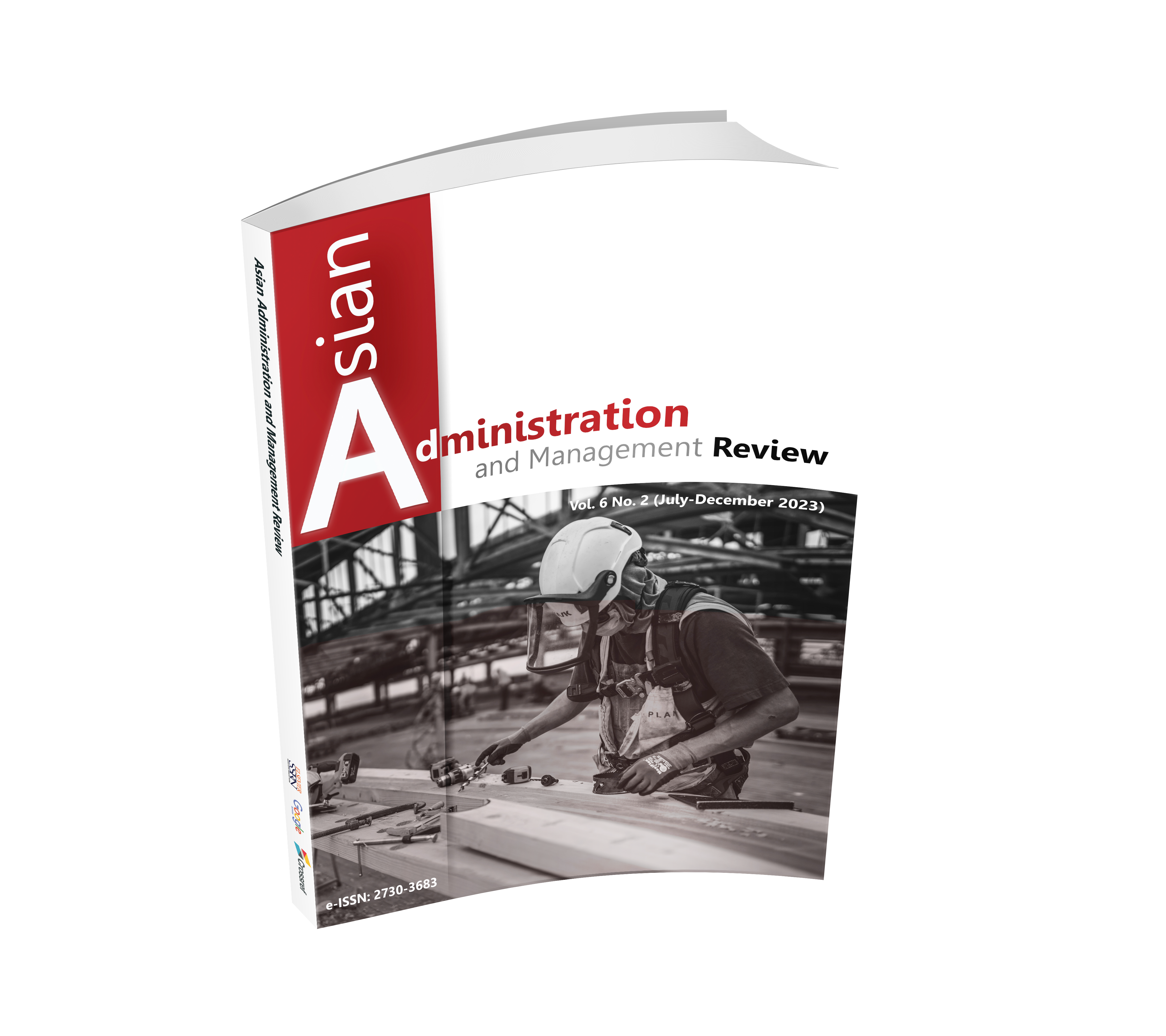VALUE ADDED TO TAI LUE ETHNIC TEXTILE HANDICRAFT PRODUCTS IN NAYANG, LUANG PRABANG, LAO PDR.
DOI:
https://doi.org/10.14456/aamr.2023.21Keywords:
Product Development Process, Value Added, Tai Lue Ethnic Textiles, Luang Prabang Tourism, Lao PDR.Abstract
The objectives of this research were to 1) explore the process of new product development of Tai Lue ethnic textile handicraft, 2) investigate value added of Tai Lue ethnic textile handicraft products, and 3) analyze the product development process that had influence on value added of Tai Lue ethnic textile. The sample group consisted of 400 Lao tourists who visited Nayang, Luang Prabang, Lao PDR. from January to May 2022. Findings showed that the product development processes had the highest mean score in screening and selection process, followed by idea generation, product development, product testing, and business analysis. For value added aspect, image value was found to have the highest average mean score, followed by personnel value, product value, and service value. According to NPD processes on ideas generation, business analysis, product development, and product testing stages, they showed a positive influence on the value-added, which could predict the value added of Tai Lue ethnic textile for 56.6%, while the screening and selecting process could not predict the value added of Tai Lue ethnic textile handicraft products for tourism with a statistical significance level of .05. The research suggested to the concerned parties should propose the model of product development to promote handicraft products of other communities, and the handicraft products should be promoted based on value added to support souvenir shops.
Downloads
References
Apiprachayasakul, K. (2016). Knowledge about the Product. Bangkok: Focus Media and Publishing.
Boonpat, O., & Kaewnet, P. (2019). Chiang Sean’s textile Identity Creation of Chiang Rai Province toward Value Added on Tourism Products. Dusit Thani College Journal, 13(2), 117-133.
Butphech, C., Chompha, C., & Tapta, S. (2018). The Value-Added Model of Thai Silk Handicraft Product in Northeastern Thailand. Rommayasan, 16(2), 195-210.
Chemsripong, S., & Petmee, P. (2017). Creating Value Added Products from Local Wisdom: A Case Study of the Ancient Cloth. Journal of Community Development Research (Humanities and Social Sciences), 10(4), 62-85.
Cooper, R., & Kleinschmidt, E. (1986). An Investigation into the New Product Process: Steps, Deficiencies, and Impact. Journal of Product Innovation Management, 3(2), 71-85.
de Chernatony, L., Harris, F., & Riley, F. (2000). Added Value: its Nature, Roles and Sustainability. European Journal of Marketing, 34(1/2), 39-56.
de Chematony, L., Riley, F., & Harris, F. (1998). Criteria to Assess Brand Success. Journal of Marketing Management, 14(7), 765-781.
Gale, B. (1994). Managing Customer Value: Creating Quality and Service That Customers Can See. New York: The Free Press.
Gupta, S., & Lehmann, D. (2005). Managing Customers as Investments: The Strategic Value of Customers in the Long Run. New Jersey: FT Press.
Kuntonbutr, S. (2012). Principle of New Modern Marketing. 5th ed. Bangkok: Chulalongkorn University Printing.
Ministry of Information, Culture and Tourism. (2021). Statistic Report on Tourism in Laos. Vientiane: Ministry of Information, Culture and Tourism.
Pisawong, S. (2021). The Product Development of OTOP Entrepreneurs to Support Knowledge-Based Network in Surin Province. NRRU Community Research Journal, 15(4), 28-41.
Porter, M. (1998). Competitive Strategy: Techniques for Analyzing Industries and Competitors. New York: The Free Press.
Prakobtham, B. (2011). Research and Data Analysis with SPSS. 8th ed. Bangkok: Bangkok University Printing.
Ravald, A., & Grönroos, C. (1996). The Value Concept and Relationship Marketing. European Journal of Marketing, 30(2), 19-30.
Saleumsack, M. (2017). The Potential of Souvenir for Tourist of Nayang Neua Village, Nambak District, Luang Prabang Province. Master of Social Sciences Thesis, National University of Laos.
Sentangsedtee. (2018). Term Jai… for business, the Power of Stories Telling. Bangkok: Matichon Press.
Sereerat, S., Limthai, S., & Sereerat, S. (2000). Principles of Marketing. Bangkok: Thirafilm and Scitex.
Sirisack, S., Sirivanh, T., Sengchanh, S., & Bounpathaph, L. (2016). The Potential and Preparedness of Local Products in the Brand Building for Tourist Souvenirs, Luang Prabang, Laos PDR. PSAKU International Journal of Interdisciplinary Research, 5(2), 51-62.
Sotwitee, S., Potipat, J., & Tagong, W. (2022). The Compared Process of Community Product Development for Promoted Tourism between Community Tourism Enterprise of Nam Chiew, Trat Province and Nong Bua Tourism Community, Chanthaburi Province. DRIRDI Research for Community Service Journal, 8(1), 19-32.
Thipchatyothin, P. (2010). Value-Added Activities Increase Customers with Value-Added Activities. Productivity World Journal, Prince of Songkla University, 15(85), 87-89.
Tongpinyochai, T., & Tangrerkwarasakul, E. (2018). Key Success Factors of Product Development and New Product Development Process Influence on New Product Development Success in Small and Medium Enterprises Processing Fruit. A paper presented at the 2nd UTTC Academy Day, University of Thai Chamber of Commerce, Thailand.
UNESCO. (n.d.). Sustainable Tourism Toolkit. Retrieved from https://whc.unesco.org/en/sustainabletourismtoolkit.
Untong, A. (2018). Research Methods in Tourism. Chiang Mai: Institute of Public Policy Studies Foundation.
Wanichbancha, K. (2008). Mulivariate Analysis. 3rd ed. Bangkok: Chulalongkorn University Printing.
Yamane, T. (1973). Statistics: An Introductory Analysis. 3rd ed. New York: Harper and Row.

Downloads
Published
How to Cite
Issue
Section
License
Copyright (c) 2023 Authors

This work is licensed under a Creative Commons Attribution-NonCommercial-NoDerivatives 4.0 International License.











.png)


